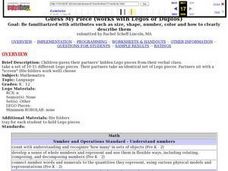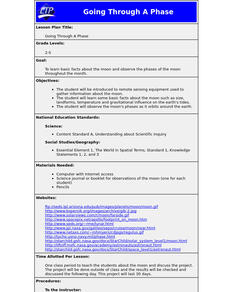Curated OER
Order from Smallest to Largest
In this smallest to largest learning exercise, learners compare the sizes of the bears in the pictures and put them in order from smallest to largest.
Curated OER
Snowflake Fun
In this snowflakes fun activity, students identify and read about 5 different snowflakes illustrated on the sheet. First, they cut out each of the snowflakes on the rectangles where indicated to make finger puppets. Then, students use...
Curated OER
Color the Biggest Fish
In this visual discrimination worksheet, students will analyze the sizes of the fish. Students will study five sets of fish and color that fish which is the biggest.
Curated OER
Creating and Designing a Database of Class Library Books
Middle schoolers are shown how to create their own database using different field types. They are taugt how to design their own layout-chaning font or size and color of text, adding background color and clipart. Students interrogate...
Curated OER
Guess My Piece -working with Legos
Students participate in guessing their partners' hidden Lego pieces from their verbal clues. They work in partners to accomplish their goals. They are meeting a variety of math standards by completing this lesson plan.
Curated OER
Hudson Canyon Expedition Let's Bet on Sediments!
Students investigate and analyze the patterns of sedimentation in the Hudson Canyon students observe how heavier particles sink faster than finer particles. They study that submarine landslides (trench slope failure) are
Curated OER
Dog Salmon Lesson Three
Students observe patterns and scale sizes on the salmon skin. They explore the tanning of salmon skills and practice the Athabascan terms for the salmon parts. They make salmon skin prints.
Curated OER
Relative Size: Big and Little
Students work with big and little objects by placing objects in order small to large, and by completing a worksheet.
Curated OER
IS A BLUE WHALE THE BIGGEST THING THERE IS?
First graders explore measurement in relation to size of objects.
Curated OER
Going Through A Phase
Young scholars are introduced to remote sensing equipment used to gather information about the moon. They learn basic facts about the moon such as size, landforms, temperature and gravitational influence on the earth's tides.











